From Renewable Roadmap to Operational Planning
Capacity Expansion Planning and Dispatch Optimization
Steady-state and dynamic grid analysis for renewable integration has been Energynautics’ core business since company inception. Such technical studies require detailed inputs concerning power system setup and operation, which are typical outputs of techno-economic optimization and planning models. Long term planning with a time horizon of years to decades determines the optimal portfolio of generation and grid assets, while operational planning aims to optimize their use. Energynautics have in the past years gathered significant experience in such techno-economic planning studies using multiple different software solutions.
The company’s grid analysis experience has been expanded with the economic expertise required in today’s renewable energy planning landscape. With renewable energy and storage now often economically strongly competitive, the demand for integrated resource planning and co-optimization of generation and grid infrastructure is rising. Energynautics offer the expertise required to conduct comprehensive planning studies including capacity optimization, dispatch simulation, steady-state and dynamic power system analysis – everything that is needed to ensure that the power system of the future is economically feasible and technically stable and reliable.
Energynautics currently use PLEXOS and PyPSA to conduct techno-economic optimization and provide inputs to the electrical analysis. HOMER is also available for quick analysis of small systems.
Depending on system location and size, budget, scope and timeline of the study, Energynautics will always identify the optimal software solution for the grid, and supply the experts and knowledge to handle the task at hand. Be it the development of an co-optimized generation-transmission expansion plan, dispatch diagnosis for future scenarios, a “what if” study for a multitude of scenarios, or detailed questions on ancillary services and management of variable renewable energy: Energynautics can conduct the necessary studies, present the results to power system stakeholders, and conduct training and capacity building to bolster the client’s in-house expertise on the matter at hand.
PyPSA: Customized Open Source Solution for Flexibility
Energynautics have been using Python-based power system simulation and optimization frameworks for more than a decade, including both open source and in-house tools. The latest and most encompassing software site used is Python for Power System Analysis (PyPSA), an open source toolkit from an academic background. Energynautics have used PyPSA for power system planning and operational studies, including both capacity expansion planning (optimized system setup) and production simulation (optimized dispatch).
Out of the box, PyPSA is geared towards strategic studies of the European power system, a purpose for which it has also been used by Energynautics in multiple projects. However, the Energynautics development team have also included a number of add-on functionalities, greatly expanding the scope of services the software can be used for:
- Calculation of flow-based market coupling (FBMC) constraint spaces for use in market simulation software such as BALMOREL
- Optimization of redispatch after import of market results
- Security-constrained unit commitment (SCUC) and optimal power flow (SCOPF) based on generation unit characteristics, using mixed-integer solver engines Gurobi or HiGHS
- Detailed generation unit modelling including complex efficiency and cost functions
- Detailed modelling of hydro cascades and storage
- Optimization of ancillary services such as primary and secondary reserve
- Pre-optimization of resource use and outage management
PLEXOS: Commercial High-End Simulation Tool
Energy Exemplar PLEXOS is a commercial power system simulation software site, including mixed-integer functionality for capacity expansion as well as production simulation. Its vast range of functionality is more focused on economics than PyPSA, which comes from a distinct grid simulation and optimization background. Energynautics have used PLEXOS to develop integrated resource and resilience plans (IRRP) for Caribbean states. These included timed investment plans as well as security-constrained unit commitment and dispatch simulations for multiple key years. Energynautics recommend the use of PLEXOS especially if the software is already in use with the client – as is the case for many power utilities especially in smaller countries and power systems.
HOMER: Easy to Use Solution for Fast Results
HOMER Pro has been a long standing industry standard software for fast capacity optimization and dispatch simulation of small power systems. While more limited in its functionality – HOMER can only be used on systems with less than 20 generators, cannot deliver optimal investment timing and does not consider grid constraints – its easy usability and robustness makes it Energynautics’ premier choice whenever fast techno-economic results for an island system or microgrid are required. Energynautics have used HOMER to develop capacity expansion plans for the Galapagos Islands, the Bahamas, multiple Indonesian islands as well as off-grid and grid connected hybrid systems in Europe.
This may be of Interest for you:
A Selection of our References.
Filter references

Connection Point Assessment for New HVDC Connector
Energynautics conducted an analysis to assess the technical viability of a new subsea HVDC connection between Spain and Italy.
Read more
Load and Generation Projection for a German Utility
Energynautics compiled geographically detailed load and generation projections for the distribution grid of EWR Netz GmbH with a focus on the future growth of distributed generation and end-use electrification up to 2040.
Read more
Low-cost, grid friendly charging for Bangladesh
A smart charger for three-wheeler charging stations in Bangladesh was developed to mitigate the grid load during peak hours.
Read more
EV Integration Handbook
Energynautics together with RE-xpertise developed a handbook on best practices for the integration of electric vehicles into the distribution grid.
Read more
Power System Planning for IRRP Development in CARICOM States
On behalf of GIZ, Energynautics supported the Caribbean Centre for Renewable Energy and Energy Efficiency (CCREEE) with generation and grid expansion planning in Guyana and Trinidad and Tobago.
Read more
NGESO Reactive Power Market Design
Development of a market-based solution for reactive power management in the GB transmission system, ensuring cost efficient provision to maintain system voltage security in a zero-carbon system.
Read more
Optimizing the Grid Operation by Using the FNN Control Box
The objective of the project is to develop a control box, the Smecon-Box, which combines local intelligence and central controllability for electric vehicles, photovoltaic systems, heat pumps and Co in order optimize the grid operation.
Read more
Consultancy Services for the North Sea Wind Power Hub Programme
This study investigates the potential of offshore wind energy hubs in the North Sea in contrast to radially connected wind farms with the aim of optimizing the integration of offshore wind.
Read more
Smart inverters for distributed generation
Recommendations to incorporate smart inverters for increasing the PV hosting capacity in distribution grids and grid reliability.
Read more
Ancillary Service Review for the Mexican Power System
Energynautics engineers supported one commissioner’s office of the Mexican regulator in their ongoing review of ancillary services needed for further increases in renewable energy contribution.
Read more
Risk Management Guidelines for Solar PV Projects in Vietnam
The objective of this assignment was to develop handbooks on risk management – technical guidelines for ground-mounted and floating solar PV projects from the development to the dismantlement phase.
Read more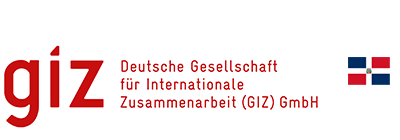
Revision of Grid Codes for the Dominican Power System
Commissioned by GIZ, Energynautics conducted a revision of the transmission grid codes in the Dominican Republic to ensure their suitability for large scale VRE integration.
Read more
Research study on sustainable energy transition and energy infrastructure development opportunities
The aim of the study was to provide input for the implementation of Resolution No 55 “Vietnam’s National Energy Development Strategy to 2030, vision to 2045” of Vietnamese Party’s Politburo and further orientations for sustainable energy transition in Vietnam.
Read more
Role of Distribution Companies in using Grid Support Services from Solar Rooftop PV systems and Storage
Energynautics was commissioned by GIZ to analyse the services which can be provided by solar rooftop PV and battery storage to support the distribution grid in India.
Read more
Distribution grid study in the Dominican Republic
Energynautics analyzed the maximum PV penetration levels in Dominican distribution grids.
Read more
EU Network Codes for Estonia
Energynautics conducted a study on various aspects of grid codes, gathering international experience and accepted good practices for Estonian consortium.
Read more
ETS Plus Emission Trading: Power market simulations for IFW
Energynautics was subcontracted by the IFW Kiel Institute for the World Economy within a larger project to evaluate the impact of rising emission prices on the power sector.
Read more
Review of the Mongolian Grid Code
Energynautics was commissioned by the World Bank in 2018 to assist the Mongolian system operator to update their grid code.
Read more
Transmission Grid Study Czech Republic
Energynautics was commissioned by a consortium of NGOs to conduct a high level transmission system study to investigate the impact of a large scale coal exit in the Czech Republic by 2030.
Read more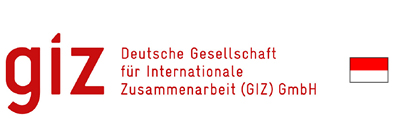
REEP 1000 Islands: RE Integration in Indonesia
Commissioned by GIZ, Energynautics, Cadmus and ABO Wind provide technical support to Indonesian power system stakeholders until 2020. The project includes multiple island grid studies, development of tender documents, capacity building workshops and a revision of the distribution code.
Read more
Vietnam Technology Assessment
Back in 2012, Vietnam published a smart grid roadmap which includes different phases for defining the smart grid implementation in Vietnam. In order to support the development of smart grids, Energynautics assessed the current smart grid progress and developed recommendations.
Read more
PV Port & Store
India aims to install 40 GW solar PV capacity on rooftops by 2022. To support this target, Energynautics developed a standardized plug-and-play PV plus battery system which ensures uninterrupted power supply, maximization of self-consumption and peak shaving of high load peaks in the evening.
Read more
Regional Capacity Development in ASEAN
In order to support the renewable energy development in the ASEAN region, Energynautics held three capacity building workshops to participants from utility networks, governments and other stakeholders in the public and private sector.
Read more
Rooftop PV policy in Vietnam
To support the Electricity Regulatory Authority of Vietnam, Energynautics developed technical requirements for rooftop solar PV installations in Vietnam, taking existing regulations, international best practices, and local development targets into account.
Read more
Power Quality Measurement Campaign at Al Zaatari PV Power Plant
A 12,9 MWp PV power plant was built to ensure the electricity supply for the Al Zaatari refugee camp in Jordan. In order to determine the influence of the PV plant on power quality, Energynautics conducted a power quality measurement campaign at several points in the local grid.
Read more
Smooth PV
Smart Modelling of Optimal Integration of High Penetration of PV (Smooth PV) is a project which has the objective to develop advanced modeling and simulation tools using the software tool DIgSILENT/PowerFactory in order to evaluate the impact of a large-scale penetration of PV on the optimum economical design/operation of the distribution and transmission network.
Read more
REEP 1000 Islands
GIZ has commissioned Energynautics to conduct pilot studies for renewable integration on two Indonesian islands. The Indonesian government has set a national target of 23% electricity from renewable sources by 2025. Hybrid systems on the more than 17,000 small Indonesian islands can contribute significantly to reaching this goal.
Read more
3DMicroGrid
Microgrids are a promising solution to facilitate the integration of renewable energies. 3DMicroGrid includes the design, development and demonstration (3D) of a future-proof active smart microgrid system to integrate and optimize multiple energy sources and loads.
Read more
DESIGNETZ
New innovative approaches are needed for a cost-efficient integration of renewables into the distribution grid. Energynautics analyses their effectiveness and refines their use for the BDEW traffic light concept.
Read more
How-to guide for variable renewable energy integration
How can variable renewable energy be integrated in the Philippine power system? Energynautics shows how with a step-by-step guide developed for the World Bank and the Philippine system operator!
Read more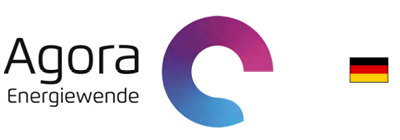
Innovative Grid Toolbox
Grid expansion is an essential flexibility option for integrating ever-greater shares of variable renewable energy: We show which innovative “tools” there are in order to optimally use the transmission grid.
Read more
European Grid Study 2030/2050
100% renewables by 2050? Commissioned by Greenpeace, the study investigated how the European grid has to be cost-optimized in order to realize the Energy [R]evolution Scenarios.
Read more
Grid Absorption Study Seychelles
Renewable energy in small island systems brings economic benefits as well as technical challenges: We reveal how wind and solar can be optimally integrated into the Seychelles power system.
Read more
Barbados Grid Code Review
Energy policy target for 2029: 29% renewables. With this in mind, Energynautics reviewed the Barbados Grid Code and developed new Planning and Operation Codes.
Read more
Renewables Grid Integration Study Costa Rica
100% renewables today: Made possible by excellent wind, solar and hydro resources. We show how the power system should be organized for reliable operation.
Read more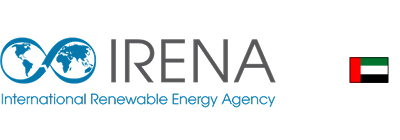
IRENA Grid Code Study
Which aspects have to be considered when developing grid codes for integrating high shares of renewables while maintaining a reliable and stable power supply? We provide answers!
Read more
Snoopi – Smart Network Control with PV Infeed
PV battery systems can do more than just optimize self-consumption: Our controller stabilizes the voltage and thus paves the way for a higher PV penetration.
Read more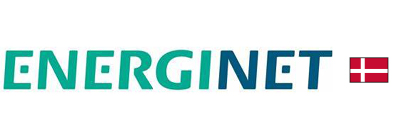
Cell Controller Project
Development and test of a universal high-end Smart-Grid-Controller. The highlight: Pure autonomous island operation of the distribution system based solely on distributed energy resources.
Read more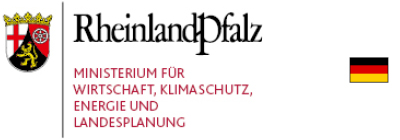
Distribution System Study Rhineland-Palatinate
100% renewables by 2030, that’s what the state government is aiming for. We show what this aim will mean for the distribution system of RLP and how smart grids can contribute.
Read more


